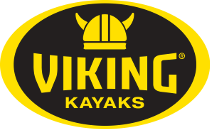Tackle Pod, being prepared & successful kayak fishing
3:42PM 4th Dec 13

Shelley Bradish Cooney of Team Viking Predators talks about the viariety of tackle she uses when fishing from her Viking kayak and how being organised lends itself to greater success, the new Tackle Pod™ plays an big role in this...read on
From Shelley: for Every year at the start of each new fishing season I draw up a list of things I need, and then there are the things I want. The final list includes the things I must have. At the top of the “must have” list: the new Tackle Pod™ from Viking Kayaks.
In the five years that I have been kayak fishing, one of the things I have learned about success on the water is preparation. I have separate containers for Jigs, Traces, Lures and Live Bait Rigs. The beauty of the Tackle Pod™ is that you can preload all the gear you need for on the water, then slip the pod into the centre well of your kayak, connect your power cable, and you are good to go. Those early morning starts are now much less stressful, reducing the chance you will leave something behind. The extra 5 minutes in bed is nothing to sneeze at either.
Another feature of the Tackle Pod™ is that it extends the amount of gear you can take. The centre well of my Viking 400 lite has a capacity of 15 L – quite a generous size and the Tackle Pod™ extends that by another 15% . The system uses a special lightweight plastic that gives you this extra capacity without adding any extra weight to the kayak – a key consideration. Unloading your kayak is much faster – unplug your cable, remove your Tackle Pod™, Fishing Rods, Chill Pod and you are ready to load your kayak on your car or trailer.
In addition to my terminal tackle, I always make sure I have a set of lip grabbers, gaff, knife, pliers to remove hooks and a spool of 25 lb fluorocarbon for tying new leaders. Sunscreen and lip balm with SPF is part of my kit, along with a large sponge that acts as a bailing device if a wave swamps me.
The following is a guide of how I organise my boxes.
Jigs: inchiku jigs in a variety of weights and colours (60gm, 80gm, 120gm, 160gm), jigheads (1/2 oz, 3/4oz, 1 oz), knife jigs, heavy metal jigs and some slow jigs. I also take a bobbin with me for tying PR knots.
Traces: strayline traces with two Trokar hooks tied with 25lb fluro, 30lb fluro, 40lb fluro. Using good quality hooks that are very sharp ensures that you can go light on terminal tackle, maximizing your hook up rate. Off sandy beaches I use 25lb fluro size 6 Trokar Big Nasty hooks, and when I go up north I might go to a number 8 Trokar Big Nasty with 30lb for the big monster snapper. In this box I carry a range of lead sinkers that range from ¼ oz, ½ oz to 1 oz, and some spare swivels. I used to use flasher material tying traces, but have moved to lumo beads to make my pilchards or kahawai bait stand out. The plastic bags that I have each trace individually prepared I source from Plastic Box.
Lures: Where do you start? Since catching my first albacore tuna I am always on the lookout for bibbed lures. Some lures have dive ranges of 2-4 m, some are only surface lures, and all have a range of bibs, and some even have rattles. Others are neutral buoyancy, and they all come in a variety of shapes and sizes. I will spend on average $20-$30 for a good quality lure, the better the quality the sharper the hooks and the less likely the lure will fall apart under load. I have had good experience with genie clips at the end of my leader to allow a quick change of lure.
Live Bait: Traces with single Trokar Live Bait hooks, and a range of sinkers (swivel and ball sinkers – 1 oz to 6 oz). Dental floss for bridling bait and a needle for threading the floss. Sabiki rigs for catching live bait.
Soft Bait: A selection of colours and sizes, to cover fishing deep water, over foul and sand.
While it is an inexact science, I have colours that have worked well in the past – pink shine, pumpkin, sapphire shine, and black shad. Generally you are trying to mimic the food source of the area and if something does not work, try something else. When the fish are not hitting the hook hard, I will change to a smaller soft bait to put the fish closer to the business end of the jig.
In each of the boxes I have the individual units packaged in small snack size zip lock bags. This will keep moisture away, but in the event you get tossed in the surf it is a good idea to take everything out, rinse it in fresh water, dry it and then put it in new bags. Rinsing the plastic box to make sure you get rid of any salt residue will keep things from rusting.
One tip that I recommend is to think of the gear you plan to carry, and how you want to organise it. Decide on how many containers you think you will need, then take your Tackle Pod™ into the Warehouse to select from the range of Sistema boxes. Remember that some of your fishing will be done in the dark, and having boxes of slightly different shapes will make things easier. Think about leaving space for your lunch and a water bottle as well.
The Tackle Pod™ is part of the new Reload kayak soon to be released, but if your budget does not extent to a new kayak, the Tackle Pod™ can be retro-fitted to your Viking Profish 400 or 440. You can do it yourself, or give the gang at Viking a call to do it for you. With Christmas right around the corner you might think about printing off this article, and leaving it on your wife’s pillow when you go down to make her a coffee – or even better, suggest you look after the kids and she can relax in bed with coffee and read the paper.





